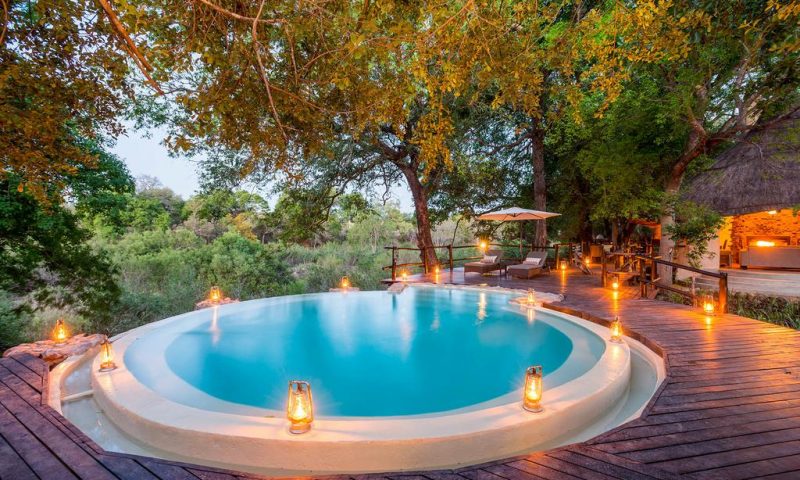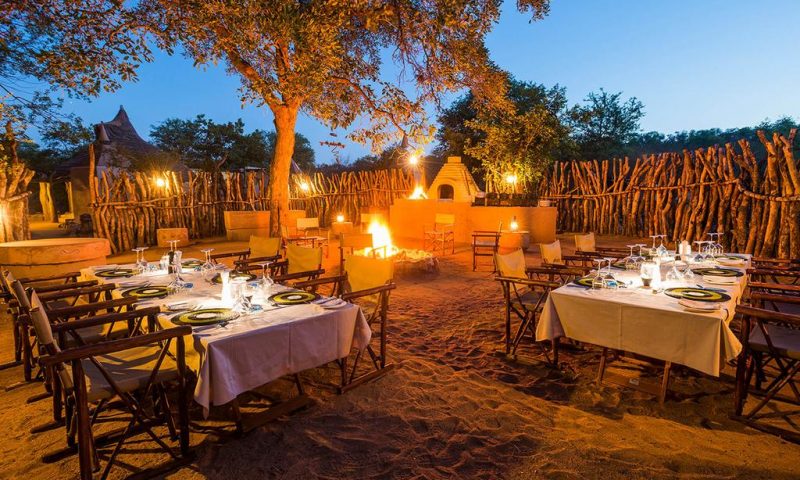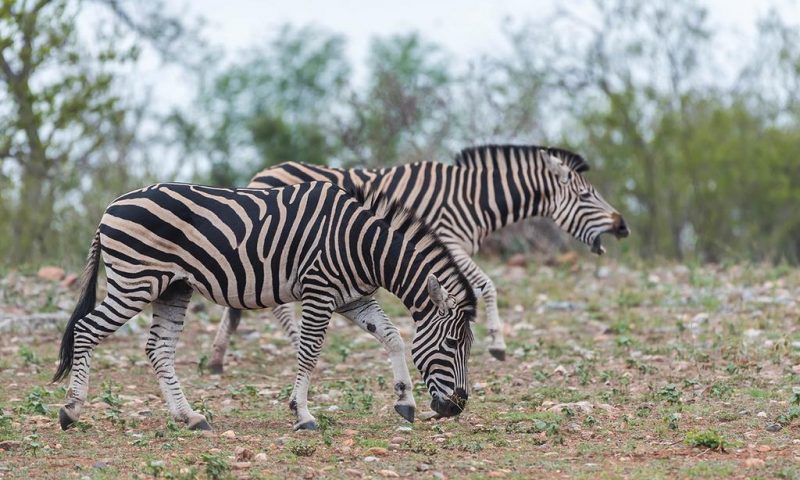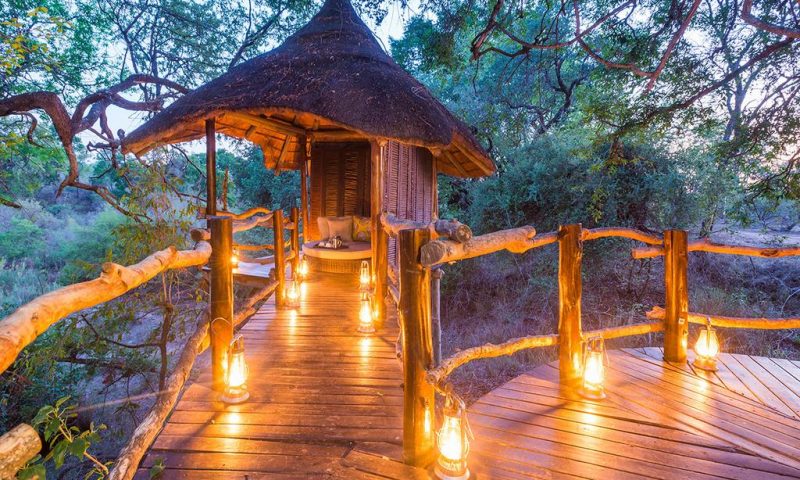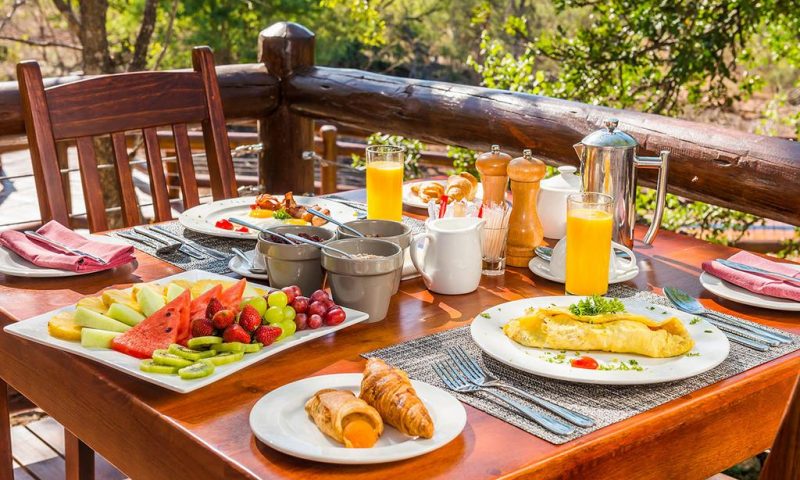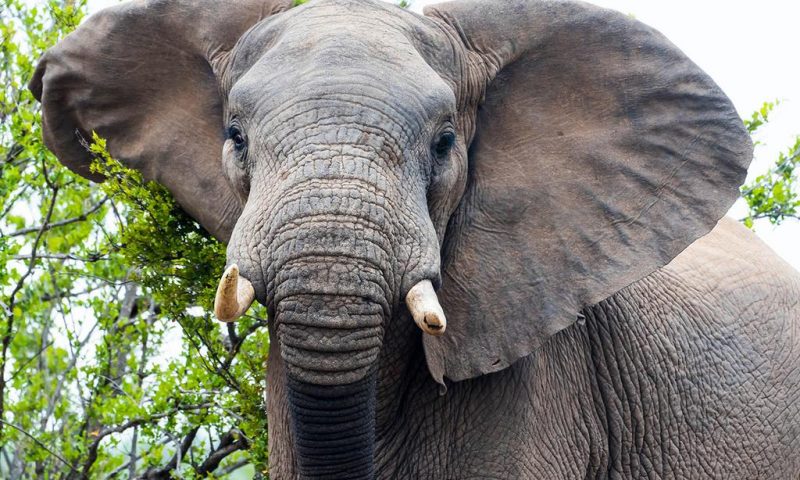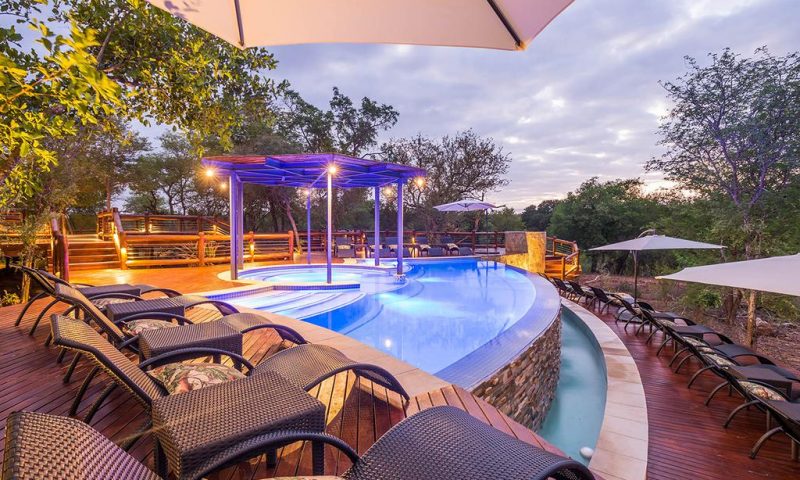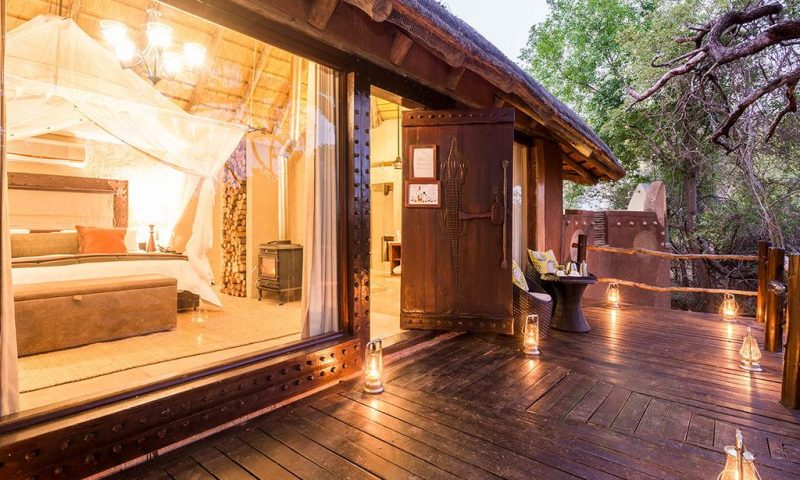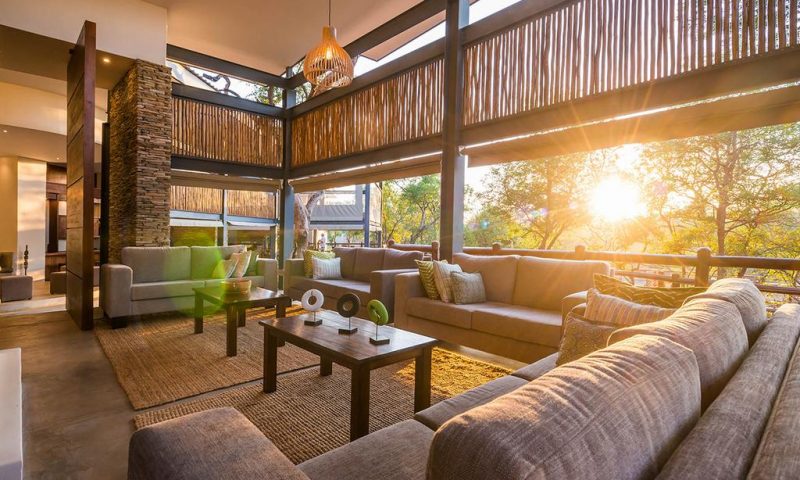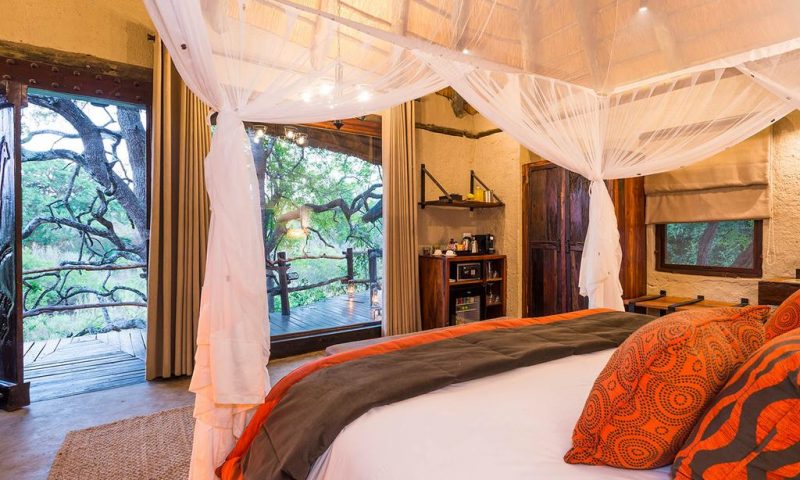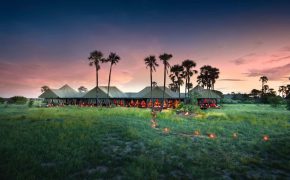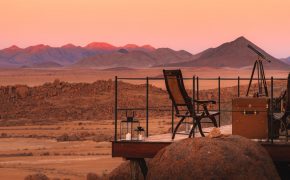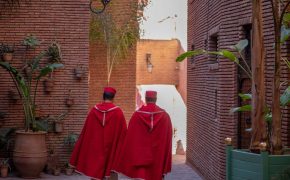The Greater Makalali Private Game Reserve (GMPGR), together with the Pidwa Wilderness Reserve forms the Greater Makalali Nature Reserve (GMNR), is currently a 25,000-hectare game reserve and a registered Protected Area (PA).
The GMNR is situated outside Gravelotte in the Limpopo Province of South Africa, in the triangle between Hoedspruit, Phalaborwa and Tzaneen.
The reserve overlooks the majestic Drakensberg mountain range in the Limpopo Province. It is bisected by the perennial Makhutswi River, a tributary of the Olifant’s River, and includes approximately 10 km of the Selati River frontage.
The Reserve was established to promote the conservation of the land and wildlife within its boundaries. Besides enhancing biodiversity, this initiative has become the draw card for visiting tourists; potential new landowners to expand the reserve, its goals and objectives; and simply for the pleasure and lifestyle of the resident landowners.
The reserve comprises of seven owners who have retained ownership of their individual properties but have removed fences to create a Conservancy allowing the game to traverse the entire extent of the reserve.
The first properties making up the reserve (originally 6,000 ha) were purchased in 1994 and the reserve has subsequently expanded to its current size of 25,000 ha.
The reserve is home to the Big 5, with previously extirpated species including lion, elephant, rhino, hippo, cheetah, hyena and disease-free buffalo, being reintroduced.
Leopard, brown hyena and the smaller mammal species as well as the endangered ground hornbill and the many threatened and endangered vulture and raptor species are present on the reserve.
This newly built 5-star lodge boasts 30 comfortable Superior Rooms to choose from, each with their own en-suite bathroom with an indoor- and outdoor shower.
CULINARY ADVENTURE
Makalali’s range of dishes features a combination of regional African cuisine to represent the ‘melting pot’ of cooking styles left behind by centuries of exploration on this great continent. From dinner in the bushveld to the legendary ‘boma dinner’ under the stars, our talented chefs provide an array of dining experiences.
While the dining is relaxed, our friendly waiting staff are called Muchindas, meaning “a servant to the king”, and guests may expect to be treated accordingly! If you are looking for an intimate setting to have a romantic meal, in particular, the private ‘sala’ dinner option is ideal.
Other options include the indoor-outdoor area where you can tuck into a plated dinner or enjoy family-style dining alongside other guests. You are welcome to arrange with your Camp Manager or Chef for children’s meals that are prepared using fresh, healthy ingredients.
The menu has a choice of all their favourite foods such as fish and chips, spaghetti bolognese, hamburgers, roast chicken with rice, and pizza.
Wildlife
The area hosts many animal species in its diverse habitat including Lion, Elephant, Leopard, Black and White Rhino, Spotted and Brown Hyena, Cheetah and Wild Dogs.
The entire reserve, with an area of 212 kilometres2, is fenced. In 1994 a game reintroduction program of endangered species and species previously extinct to the area commenced.
This was part of the first-ever relocation of intact family groups of adult elephants from the Kruger National Park. In 1995, spotted hyenas, hippos, and white rhinos were also relocated onto the property and the following year cheetahs came back to the area. In 1995 five lions were reintroduced.
The area currently hosts all the game species previously indigenous to the area, with the exception of roan and sable antelope.
A disease-free buffalo breeding project has commenced, bringing the species back after an absence of more than 50 years. Large mammal species including the ‘Big Five’ – lion, leopard, elephant, rhino and buffalo occur.
History
This region of South Africa was not suited to permanent agricultural activities until the late 1940s for various reasons which included the presence of tsetse flies in the summer months and Anopheles mosquitoes. Historically, the area had no permanent human residents.
The Bapedi (Northern Sotho) people used to live west of the Drakensberg Mountains, which divide the Lowveld and the Middleveld regions, in the area which is today referred to as Sekukuniland.
In years of drought, it was common practice for these people to cross the Drakensberg and graze their cattle in the Central Lowveld during the winter months when the risk of Malaria and Ngana was minimal. As soon as the first rains fell, they would migrate with their cattle back to Sekukuniland.
Europeans began hunting and exploring in the area during the early 19th century. The area was properly surveyed for the first time in 1886 by the Royal Geographical Society on behalf of The Harmony Mining Company. To this day, the area is locally referred to as the Harmony Block.
Gold was discovered in the 1890s, and very soon, the first town in the area was developed, Leydsdorp. The mining activities had dire consequences to the once abundant wildlife in the area, as miners and labourers hunted, snared and trapped game for both sport and food.
Fortunately, the gold ran out and the miners disappeared. A few attempted farming, although most attempts were unsuccessful, the remainder being marginal or subsistent.
During the late 1940s, the situation was brought under control (from a human perspective) by the aerial spraying of DDT over the entire area, completely wiping out tsetse flies and controlling mosquitoes to a large extent.
One can hardly imagine the effect this must have had on the invertebrate diversity. The trend at the time was to farm with cattle and this, combined with excessive hunting caused the decimation of natural game in the area due to excessive hunting and poor land management.
It took these farmers more than 40 years to realize that cattle farming was not a viable option in this area, due to low carrying capacities for grazers, an abundance of red ear and bont-legged ticks which transfer parasitic diseases and unpredictable weather patterns.
Years of heavy over-grazing also resulted in large-scale bush encroachment, lessening the grazing capacity even further. The lifting of sanctions against South Africa also resulted in beef being cheaper to import than to produce in marginal areas such as this.
The three decades between the 1950s and the 1980s again saw an influx of miners, this time in search of mica and feldspar. The mining activities came to a gradual halt as the mining methods used were very labour intensive, resulting in high recovery costs.
Mica and feldspar are used in the production of cosmetics and paint, and ceramics and glass respectively. Fortunately for us, these minerals can be mined more effectively in other areas.
Despite this, Makalali is littered with 27 abandoned mined mines of varying sizes, which we are gradually rehabilitating. Naturally, these later miners also took what they could from the area’s wildlife resources.
Geology
This region is underlain by the basement gneisses and granites. The eastern and south western parts of the reserve are dominated by lithology type (ZM), the Makhutswi Gneiss Complex, which can be described as biotite gneiss which is a white to grey, massive equigranular, medium-fine-grained rock consisting of quartz, plagioclase and biotite with small amounts of microline and sphene and occasionally some piorites.
It is characterised by its homogeneity and lack of xenoliths and migmatitic textures but it may include pegmatite veins. This is interspersed by lithology type (ZO).
Lithology type (ZO) dominates the central northern part of the reserve. Interlaced in this are conglomerate quartzite, grit, quartz-chlorite, schist, quartz-muscovite-schist and banded-iron formation.
The south-western part of the reserve is dominated by lithology type (VH). This consists of light grey, coarse-grained, coarse-rich, biotite-muscovite granite.
Lithology type (O) occurs in the far west, the far north and the central north of the reserve. It is described as surficial deposit including alluvium and scree. Mineral deposits of magnesite, mica and tantalum and niobium are present (Peel 1997).
Topography
The Greater Makalali Nature Reserve (GMNR) is situated in the Central Lowveld region, east of the Drakensberg Mountains. The area can be described as a Lowveld plain and the altitude varies between 300 and 500m above sea level. The landscape within the conservancy is characterized by undulating terrain, interspersed with rocky outcrops.
Vegetation
The main vegetation types are Mixed Lowveld Bushveld and Mopane Bushveld. These vegetation types typify what can be broadly referred to as a semi-arid savanna ecosystem.
Savanna is defined as vegetation in which two broad categories of plant are overwhelmingly important, grasses and woody plants (trees and shrubs). The grasses occur in a layer up to about 1 meter above the ground level.
This layer usually includes a small number of non-grass species; lumped together under the title “forbes” (weeds).
Climate
The area falls within a summer rainfall region (October to April), with an average rainfall of 450mm. The area is reasonably hot and dry.
The area seldom receives frost, and generally, the temperatures vary between 7°C and 36°C, with extreme winter morning occasionally being 2°C and summer day-time temperatures reaching in excess of 45°C.
Soils
Land type FB180, FB186, FB175 and FB177 are present in the reserve. Land type FB is dominated by Gllenrosa and/or Mispah soil forms.
This group includes pedologically young landscapes that are not principally rock, alluvial or Aeolian and where the dominant soil forming processes have been rock-weathering, the formation of orthic top soil horizons and clay eluviations giving rise to lithocutanic horizons.
Lime is rare or absent in the upland soils but is widespread in the bottomland soils (Peel 1997).
K9 Conservation
K9 Conservation’s primary function is to aid and assist the Greater Makalali Nature Reserve (GMNR) counteract illegal hunting and wildlife trade by poachers and poaching syndicates.
We are fortunate to have an extremely dedicated APU team on the GMNR led by Peter Wearne, who has been based at the GMPGR since October 2014. K9 Conservation Anti-poaching Unit (APU) have provided logistical backup and support to the Greater Makalali Nature reserve (GMNR), through the deployment of elite, highly trained and specialized, working dog units.
The K9 dog unit is based on the reserve permanently, patrolling both in vehicles and on foot. The field rangers and dogs are carefully selected and paired to maximize efficiency and effectiveness, including two extremely durable breeds: one being the Belgian Malinois, the other the Weimaraner’s.
Belgian Malinois: originally bred for herding purposes. The Malinois have the perfect temperament, intelligence, dedication, agility and high level of diligence to be the perfect anti-poaching K9 soldier on the frontline, protecting our precious wildlife.
They also have a very strong bite strength, making them very effective in the field. They are trained to ignore all animal scents and track only human suspects.
Weimaraner’s are used mostly to track animals, detect animal remains and snares by scenting, to locate wounded animals and occasionally assist wildlife vets.
Whilst both breeds are classed as ‘patrol dogs’, their functions differ somewhat and often their individual skills and abilities compliment and assist each other in the field.
Returning to their Natural Environment
The B2W objectives being the promotion and conservation of wildlife, fauna and flora and the natural environment, including the ecosystem, in and on the reserve land; establishing a formal release facility for compromised and rehabilitated indigenous wildlife on the reserve land.
Over the years, the GMPGR have facilitated the release of several species from various centres on a small scale. The capacity for release within GMNR has been greatly increased through the construction of 4 suitable rewilding enclosures within a release facility, with the funding assistance of the Humane Society International (HSI).
A slow-release process is carefully managed whereby the previously compromised and rehabilitated animals are successfully released back to the wild.
The Back to the Wild Programme was implemented by their Reserve ecologist, Audrey Delsink Kettles. It is currently managed by the Reserve management, who works hand in hand with Audrey Delsink Kettles (Executive Director of Humane Society International/Africa) and Nicci Wright (Executive Director of African Pangolin Working Group and an internationally qualified wildlife rehabilitation specialist.)
There are two Environmental Monitors who are stationed at the Back to Wild facility, who play a major role in the success of this programme. This would not be possible without their dedication and care for the wildlife.
Reintroduction of African Buffalo into the Greater Makalali Nature Reserve
African buffalo, Syncerus caffer, members of the bovine family, were once widely distributed through Sub-Saharan Africa, but the advent of a Rinderpest epidemic between 1896 and 1899 resulted in their virtual extinction in most parts of Africa south of the equator.
Due to their natural resilience and concentrated conservation efforts, buffalo are once again reasonably well distributed in areas under conservation in South Africa, Zimbabwe and Botswana.
Although African Buffalo are known carriers of amongst other diseases, Foot-and-mouth disease (FM) as well as Corridor disease, a new threat of potential massive implications has surfaced in recent years, namely Bovine Tuberculosis (BTB). A large percentage of Buffalo in the Greater Kruger system have been affected by BTB.
The breeding of disease-free buffalo has resulted in the establishment of pockets of these animals outside the Kruger Park system and associated areas. These areas are outside of the Red line. To ensure FM and other diseases don’t get transmitted to animals outside the Red Area strict control measures are applied.
The Greater Makalali Nature Reserve (GMNR) is an area of 25 000 hectares. In 1994 a game reintroduction program of endangered species and species previously extinct to the area commenced.
This was part of the first ever relocation of intact family groups of adult elephants from the Kruger National Park. In 1995, spotted hyenas, hippos, and white rhinos were also relocated onto the property and the following year cheetahs came back to the area.
In 1995 five lion were reintroduced. The area currently hosts all the game species previously indigenous to the area, apart from roan and sable antelope.
A disease- free buffalo breeding project commenced over ten years ago in a 400-hectare buffalo camp bordering the GMNR. The vision was to eventually release a substantial herd of buffalo into the open system after an absence of more than 50 years.
On Saturday 22nd of June 2019 the fences of the buffalo camp were dropped, and the buffalo were driven into the open system by helicopter. The occasion was witnessed by Members of the GMNR, their families including Gary Elmes the Chairman of the Greater Makalali Private Game Reserve (GMPGR) and the Reserve Warden Rob Panos.
The buffalo release has brought much excitement into the Safari Industry as it’s been more than half a century since all the big five have roamed freely within the diverse wilderness area of the GMNR.
African wild dogs. Conservation status “vulnerable” (population decreasing)
The Greater Makalali Game Reserve (GMPGR) has become the newest addition to the Wild Dog Range Expansion Project, coordinated by the Endangered Wildlife Trust (EWT) and the Wild Dog Advisory Group of South Africa (WAG SA) as part of on-going efforts to save the species from extinction.
The goal is to reverse the decline of wild dogs globally, by actively increasing their populations and range throughout southern Africa. This is achieved this by establishing, maintaining and expanding safe space for wild dogs; reducing threats to their survival; ensuring positive changes in human-based values to wild dogs; and supporting laws to better protect them.
Despite this, wild dogs are still among the most threatened animals in Africa, under severe threat from snaring, poaching, disease, roadkill, and habitat loss.
In southern Africa, the Endangered Wildlife Trust (EWT) is helping reverse this continent-wide trend, and the population has stabilised at around 500 individuals.
The reserve is currently 25, 000 ha and has recently obtained national private nature reserve status. Due to its size, ecology and management efforts made to keep the area protected, the Greater Makalali Nature Reserve has been identified as an ideal site to introduce a pack of wild dogs.
Wild dogs have previously passed through the area, but the aim of this introduction will be to promote a stable pack that resides on the Reserve.
The most recent translocation to the GMPGR was made possible thanks to a group effort by aha Hotels & Lodges, the EWT, WAG SA, the Scott family, owners of the GMPGR and Rob Panos, the Reserve Warden.
Cheetah (Acinonyx jubatus). Conservation status “vulnerable” (population decreasing)
The Greater Makalali Private Game Reserve (GMPGR) is part of the Cheetah Metapopulation Project, coordinated by the Endangered Wildlife Trust (EWT) which contributes towards the management of approximately 335 Cheetahs on 53 reserves in southern Africa.
The principal goals of the project are to maintain the genetic and demographic integrity of the metapopulation and to increase the resident range of cheetah in southern Africa.
The latest addition to our cheetah population was a subadult female that was purchased from Shamwari Private Game Reserve in 2018, thanks to Bernie Smith, owner of Garonga Safari Camps.
